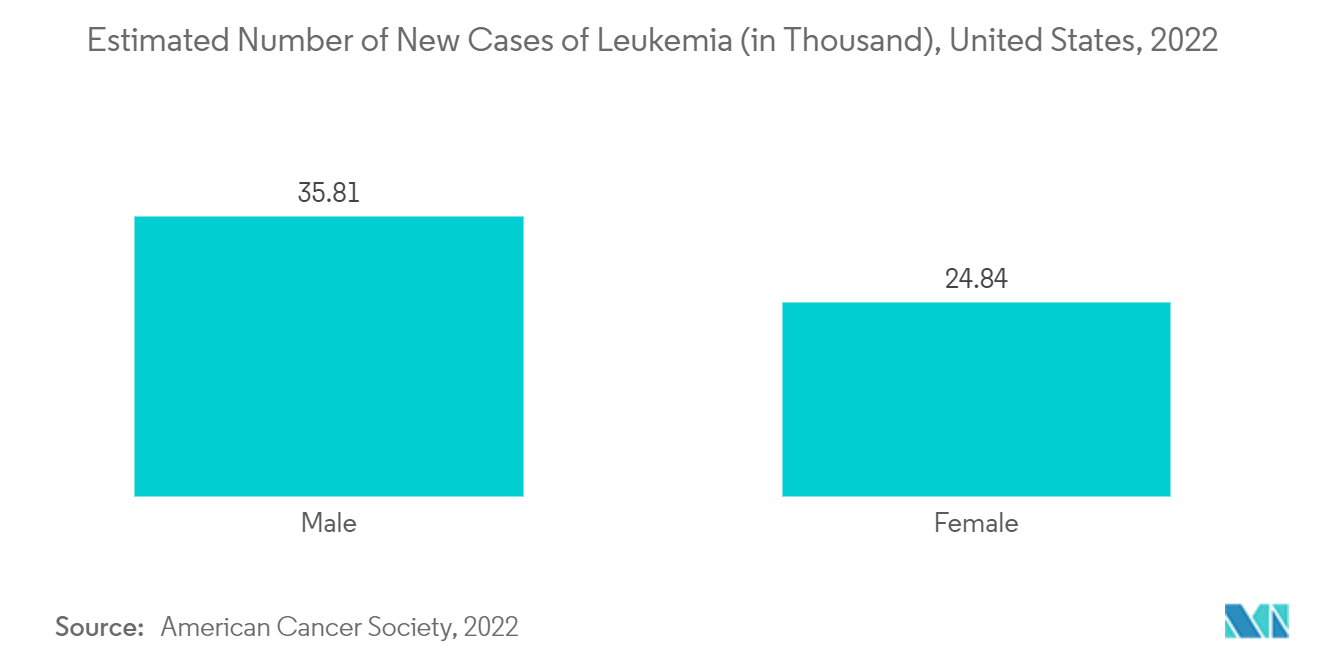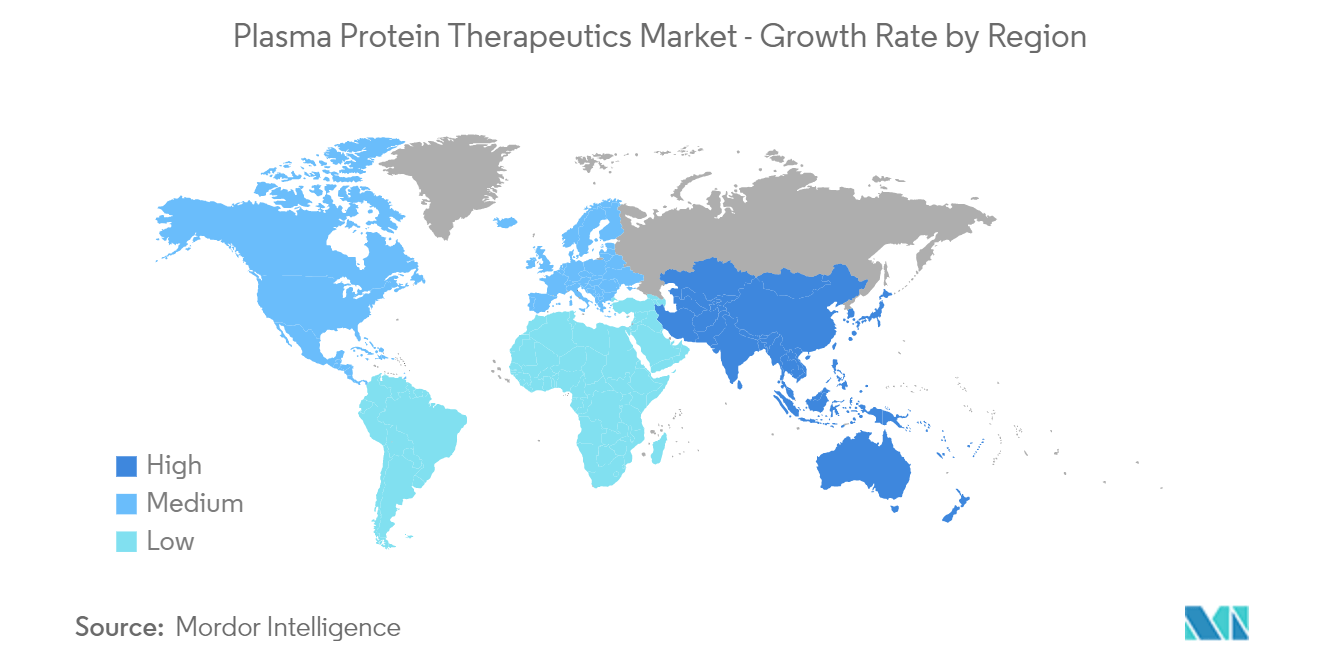Market Trends of Plasma Protein Therapeutics Industry
This section covers the major market trends shaping the Plasma Protein Therapeutics Market according to our research experts:
Hemophilia Segment is Expected to Witness a Growth in the Plasma Protein Therapeutics Market Over the Forecast Period
Hemophilia is a rare genetic bleeding disorder that prevents normal blood clotting. The main symptom of this disorder is uncontrolled bleeding, which frequently occurs in various areas of the body. The amount of bleeding is determined by the severity of hemophilia. The segment is expected to grow in the future due to the increasing number of patients diagnosed with hemophilia. For instance, as per the article published in May 2022 by MedlinePlus, National Library of Medicine (NLM), Hemophilia A is the most prevalent type of the condition, with an incidence rate of 1 in 4,000 to 1 in 5,000 males worldwide born with this disorder, and Hemophilia B occurs in approximately 1 in 20,000 newborn males across the world. This prevalence of hemophilia among the target population is increasing the demand for advanced plasma protein therapeutics. As fresh frozen plasma (FFP) is one of the most commonly available for the treatment of hemophilia A and B in some countries, this is expected to drive the growth of the hemophilia segment.
Moreover, the increasing research & development (R&D) of new therapeutics and company activities are expected to boost segment growth over the forecast period. For instance, in July 2021, Sanofi presented Clinical data and new research from Sanofi's rare blood disorders portfolio of marketed and investigational therapies for people with hemophilia, immune thrombocytopenia (ITP) and acquired thrombotic thrombocytopenic purpura (aTTP) at the International Society on Thrombosis and Haemostasis (ISTH) 2021 Virtual Congress. In addition, in December 2021, Pfizer Inc. and Sangamo Therapeutics, Inc., a genomic medicines company, published an updated follow-up data from the Phase 1/2 Alta study of giroctocogene fitelparvovec, investigational gene therapy for patients with moderately severe to severe hemophilia A. Thus, increasing product development in the segment is anticipated to drive market growth over the forecast period.
Additionally, the rise in leukemia cases leads to the demand for plasma transfusion and therapy. Doctors prescribe platelet transfusions to people with leukemia who have low platelet counts. As per the American Cancer Society 2022 update, 35,810 males and 24,840 females were affected with leukemia.
Hence, due to the rise in hemophilia diseases, and the increase in research & development for hemophilia therapy, the hemophilia segment is expected to have significant growth over the forecast period.

North America is Expected to Witness a Growth in the Plasma Protein Therapeutics Market Over the Forecast Period
North America is expected to witness growth in the overall plasma protein therapeutics market throughout the forecast period owing to the increasing prevalence and incidence of autoimmune and neurological diseases and a rise in research & development in plasma protein. Moreover, the well-established healthcare infrastructure-focused market players on R&D for plasma protein therapeutics, coupled with recent product launches and the rising burden of autoimmune disorders, are primary growth factors for the market in the United States. For instance, as per the CDC November 2021 update, in the United States, 24% of all adults, or 58.5 million people, have arthritis. It is a leading cause of work disability, with annual costs for medical care and lost earnings of USD 303.5 billion. In fact, among chronic diseases in North America, arthritis causes more disability than any other condition, including heart disease, diabetes, and back or spine problems.
Furthermore, as per the October 2021 update from CDC, by 2040, an estimated 78.4 million adults aged 18 years and older are likely to be affected with doctor-diagnosed arthritis. Platelet-rich plasma therapy or PRP therapy, or autologous conditioned plasma (ACP) therapy, attempts to take advantage of the blood's natural healing properties to repair damaged cartilage, tendons, ligaments, muscles, or even bone. The therapy is currently used to treat arthritis. Hence, as per the estimates mentioned above, the growing arthritis cases in the United States are anticipated to create opportunities for advanced plasma protein therapies, driving the overall market growth in the country.
Additionally, product launches, collaborations, mergers, and acquisitions in the field of plasma protein therapeutics are likely to boost market growth over the forecast period. For instance, in October 2022, Grifols agreed with Canadian Blood Services to accelerate self-sufficiency in immunoglobulins for Canada. Under the 15-year agreement, the company is likely to provide an additional 2.4 million grams of Ig annually for Canadian patients and Canadian Blood Services with renewal options and pricing in line with Western market values and subject to periodic reviews. Hence, such collaborations and agreements with companies are likely to increase product availability in the studied region, thereby boosting market growth over the forecast period.
Therefore, due to the rise in blood-related disorders, increasing prevalence and incidence of autoimmune and neurological diseases, and research and development in plasma protein, the North American region is expected to witness substantial growth over the forecast period.

